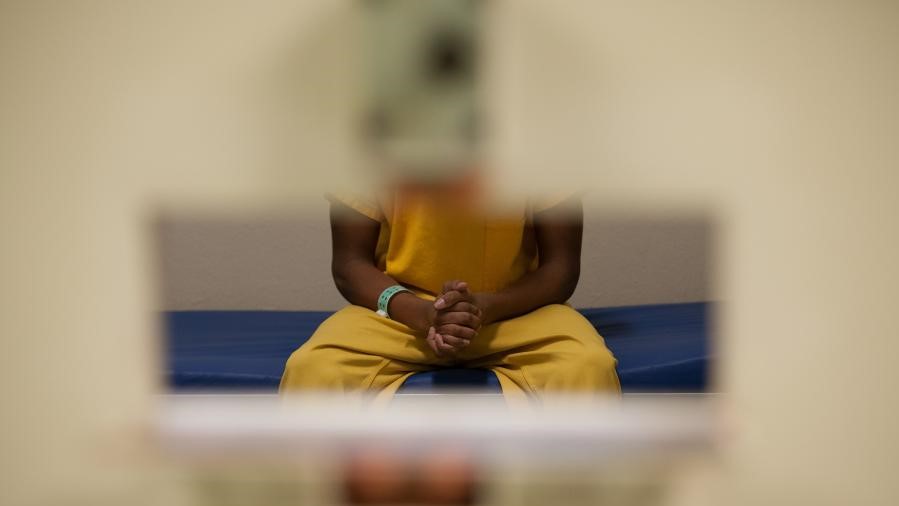The death of 17-year-old Ozzie Vargas Jr. while on a church youth retreat at a camp in North Carolina in September shined a spotlight on the issue of camp safety, but Alabama camp directors say that despite this incident, camp continues to be a safe place for young people.
“By far, camps are one of the safest environments young people can go to,” said David Payne, director of Camp Baldwin in Elberta. The camp is a ministry of Baldwin Baptist Association. “[Vargas’ death] does, however, bring up the question of safety and reminds all of us to review our safety procedures and equipment to make sure that something like this doesn’t happen again.”
Though no organization or agency in Alabama formally tracks deaths that occur at camps, the death of a camper is rare, according to Allen McBride, director of Camp Mac in Munford and president of the Association of Alabama Camps. In fact, he said the drive to and from a camp is probably more dangerous than the camp activities.
The American Camp Association (ACA) estimates that in 2005, more than 10 million children and youth had a camp experience at the more than 12,000 day and resident camps in the United States. Approximately 8,000 of those camps are operated by nonprofit groups, including youth agencies and religious organizations.
Although no organization currently keeps track of camp illnesses and injuries, ACA, in conjunction with Markel Insurance Company, announced plans in May to conduct a five-year, nationwide study to track illnesses and injuries, monitor trends in campers’ health, identify risk factors and analyze appropriate intervention strategies.
Buster Taylor, executive director of Shocco Springs Baptist Conference Center in Talladega, said he knows of only two deaths at Shocco Springs in the more than 25 years he has served there and both of those, one of which was a senior adult, were attributed to natural causes.
The biggest safety concern for most camp directors is water accidents, specifically drowning, according to Phil Robeson, director of Marshall Baptist Retreat Center in Guntersville. He said that water safety is emphasized numerous times during each camping event at the retreat center, which is a ministry of Marshall Baptist Association.
“Whenever a group is staying here, we have a lifeguard that meets them at the door of the pool and goes over the rules before they ever come in,” Robeson said. “In orientation, we again emphasize the … rules. So they get that information at least twice.”
Other common sports, such as basketball and football, account for many of the injuries that happen at camp each year, according to Robeson, who has seen very few serious injuries in his five years as camp director. The two most serious injuries occurred last summer when a 15-year-old boy required stitches after hitting his head on a teeter-totter and another boy broke his wrist when he jumped from the back of a truck.
“Usually leaders are very on top of things, so more injuries occur during free time than during organized time,” Robeson said.
A recent trend at camps and conference centers is “adventure” activities, including high and low ropes courses, climbing walls, zip lines and mountain biking. Such activities can present dangers if safety protocols are not followed, but these activities are usually monitored closely, Taylor said.
According to Taylor, Shocco has added a ropes course, zip line and paintball field at the facility in recent years. To make these activities as safe as possible, Shocco officials follow guidelines established by the ACA and other agencies for their construction and safe operation.
In overseeing the paintball field, for example, Shocco provides two or three referees to observe the safety of the activities and provide supervision of the players. Since up to 40 participants can play on the field at one time, the referees must be alert at all times, Taylor said. If the referee sees a participant step out of the safe boundaries or remove his or her headgear, then the referee will blow a whistle and all play will cease.
“It’s important that we follow the guidelines set forth by the American Paintball League to ensure the quality of our equipment and the safety of the participants,” Taylor said.
Shocco’s ropes course, including the equipment such as harnesses and hardware and equipment logs, is inspected annually by Signature Research, an inspector and vendor approved by the Association for Challenge Course Technology (ACCT), the organization that establishes safety standards for challenge courses. Taylor said that all recommended repairs are completed as quickly as possible and all safety issues corrected before the element is used again.
Though neither ACCT nor Signature Research provides any type of certification for course facilitators, Signature Research does offer facilitator training workshops for camp personnel.
Taylor added that all equipment used on the ropes course and paintball field and in aquatic activities is inspected by facilitators prior to use and some equipment, such as rope, is retired after a certain number of uses to ensure safety.
Though many agencies, including individual states, monitor various aspects of camp programs and facilities, the ACA offers a comprehensive accreditation process for camps nationwide. According to the ACA Web site, ACA accreditation goes beyond basic requirements for health, cleanliness and food service into specific areas of programming, including camp staff and management, emergency plans and health care. Many camps choose not to become accredited, however, and none of Alabama’s Baptist camps is ACA accredited.
Payne said that a number of factors enters into the decision to be accredited or not. One of the primary factors for many Christian camps is cost, he said.
“The ACA has wonderful guidelines, and we try to adhere to as many of those as we possibly can voluntarily. But it is extremely expensive to be accredited by ACA, and we try to keep the cost (of the camp) down so young people can afford to go,” Payne said.
The Christian Camp and Conference Association’s (CCCA) “2005 CCCA Industry Survey of Christian Camps and Conferences” estimates that “there are more than 420,000 Christian leaders (missionaries, pastors and those in other Christian vocations) in ministry today as a result of a decision made at a [Christian camp].”
Payne said the goal of Camp Baldwin is that each child or adult who comes will make a decision to accept Christ or to grow in his or her faith while at camp. “Still that doesn’t relieve us of responsibility, so we do try to adhere to those (ACA) guidelines,” Payne said.
“We take it seriously when parents entrust their children to us for that weekend, or week or whatever. These are God’s children so we take safety very seriously.”
Safety called top priority among Alabama Baptist camp, conference center directors
Related Posts

FDA, researchers seek methods of early detection of Alzheimer’s
October 1, 2024
A new blood test could help doctors diagnose Alzheimer’s disease more accurately in a primary care setting, leading to crucial

Evangelist, youth speaker Wade Morris dies of COVID-related pneumonia
August 4, 2021
Popular youth speaker and evangelist Wade Morris died Aug. 3 at the age of 51 after being hospitalized with COVID-related

South Carolina teen lives as gospel catalyst
March 26, 2021
By Gabriel Stovall NAMB Eden Benton, a 16-year-old high school student from South Carolina, is proof of the adage,

Youth for Christ partners with churches, community
October 22, 2020
Coronavirus-related lockdowns have limited personal contact for organizations that minister to students, but Dallas-Fort Worth Youth For Christ is finding

Share with others: